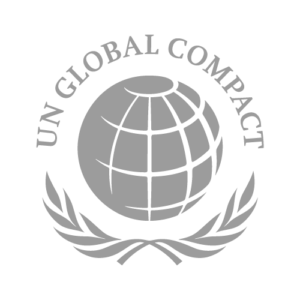BIG DATA FOR ZERO HUNGER
OOD Security is on the rise, and the world food programme was recently awarded for The Nobel Peace Prize for its efforts to combat hunger and prevent the use of hunger in warfare. On World Hunger Day, Anne Poulsen and Louise Fuchs talk about digitalisation of the food sector, and how aligning business models with the Sustainable Development Goals is good business.
There is food enough for everyone in the world. The problem is access.”
Anna Poulsen is adamant about the benefits of partnerships when solving age-old problems, such as the one the World Food Programme (WFP) battles with: hunger.
“In the previous decades we saw some really important progress in terms of eradicating hunger. Unfortunately there was a reset i 2015, when the number of hungry people started to increase again,” Poulsen says.
The current number of people experiencing food insecurity is 940 million. There are 16 countries with very high levels of hunger, according to the Hunger Map Live – which has incorporated Covid-19 statistics as well.
“It’s been going the wrong direction for three years now. One out of nine people are in food insecurity. There are many reasons. One is conflict: We’ve reached a situation where there are more protracted conflicts in the world than we’ve ever seen before. The humanitarian needs are simply astronomic. So conflict drives hunger. Another key reason is climate change, and the impact that has on people’s ability to feed themselves,” she says.
While food insecurity is on the rise, hunger and malnutrition has become a key priority of governments in a number of countries.
“I think it’s dawning upon us across sectors, how important food and nutrition is for the future. There is a new report called ‘The Cost of Hunger in Africa’. What does hunger actually cost, when people are malnourished from early childhood? Huge amounts of money is lost every year – as if the humanitarian aspect wasn’t enough. I think there is a growing understanding of these issues, including the economic potential, that also private sector companies should take a keen interest in.”
THE CLIMATE IMPACT-ALIGNED BUSINESS PLAN
At Kolonial.no, Louise Fuchs is heading communications and sustainability in a business aiming to disrupt old ways of thinking. She notes that food waste is a challenge in the Nordics – and food insecurity may eventually affect this region as well.
“As the climate keeps changing, we’ll face the exact same problems as everyone else when handling groceries. But at a local level we have more of a short-term effect on the climate around us, on how we build our value chain and incentivise people to have less food wastage at home, and less CO2 emissions – short-term, that’s where we can have a huge impact as a company.”
With no grocery store to display food, there is also less waste in the value chain of Kolonial.
“The last three years we’ve been at half a percentage of food waste. The industry average is 14 percent, where food arrives from farmers to transporters,” Fuchs explains.
But they do deliver the goods to people’s homes. This is where big data comes in, making delivery less carbon intensive.
“We’re one of the few companies that drive dynamic routes. We’re 30-40 percent more effective than other transport companies, such as Posten or Bring. Because we apply technology to a lot of links in our value chain, we can harvest a lot of good synergies for the climate,” Louise says.
“It’s easier when you have your business plan aligned with making a climate impact. When those two are conflicting, it’s difficult to plan for sustainability at scale. If we grow, there are going to be more customers, and that means even more groceries per car,” she continues.
– PREPAREDNESS IS EVERYTHING
Being experts at food- and humanitarian assistance, partnerships are central to WFP. But partnering with local markets and communities wasn’t always modus operandi in the World Food Programme.
«The way we were born as an organization was in the early sixties, when we had food surplus in our region of the world, and someone got the idea to sail the food down to Africa, which could destroy local markets. We don’t do that anymore,» Poulsen explains.
«But even when I started in WFP in 2004, in Haiti, we would ship food from Scandinavia to Haiti – which doesn’t really make sense. We have transitioned from the old-fashioned food aid into food assistance. We still deliver the majority of assistance as food, but we now also use cash-based transfers. We give people money to buy their own humanitarian food assistance. We do that where there is food on the market and functioning systems – so we don’t need to buy and ship and store the food for them.»
Now, data-driven real-time information ensures proactive delivery of food assistance. The Hunger Map Live provides information that is key to identifying and solving food crises when they occur. And the map is accessible for everyone.
«There more we know and the sooner we know it, the better we can act. Preparedness is everything in our line of business. With better tools – such as more sophisticated weather forecasts, and information from the people we serve through chatbots – we can operate in a more lean and efficient manner. This is not just a tool for us, but a tool for the global community,» Poulsen says.
Learn more on our podcast here, or wherever you listen to podcasts. Make sure you subscribe, so you don’t miss out on next week’s episode.

 Foto: Dominic Swain / Unsplash
Foto: Dominic Swain / Unsplash


